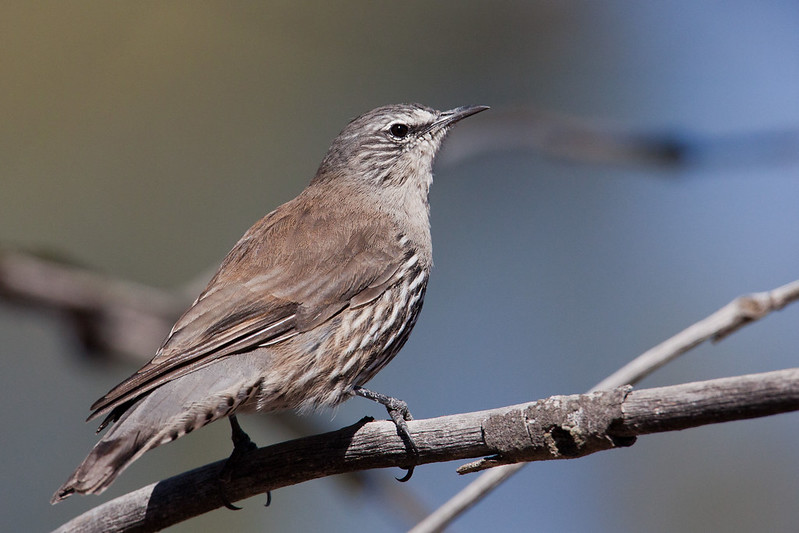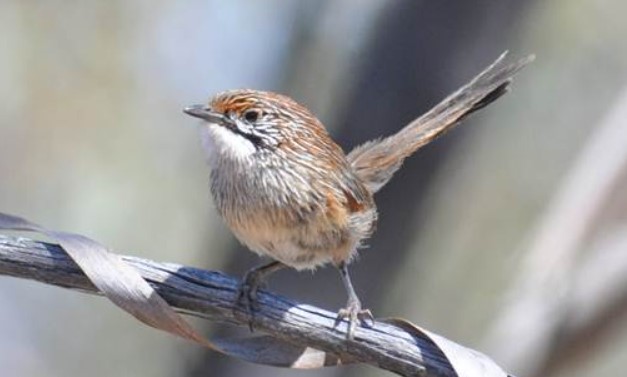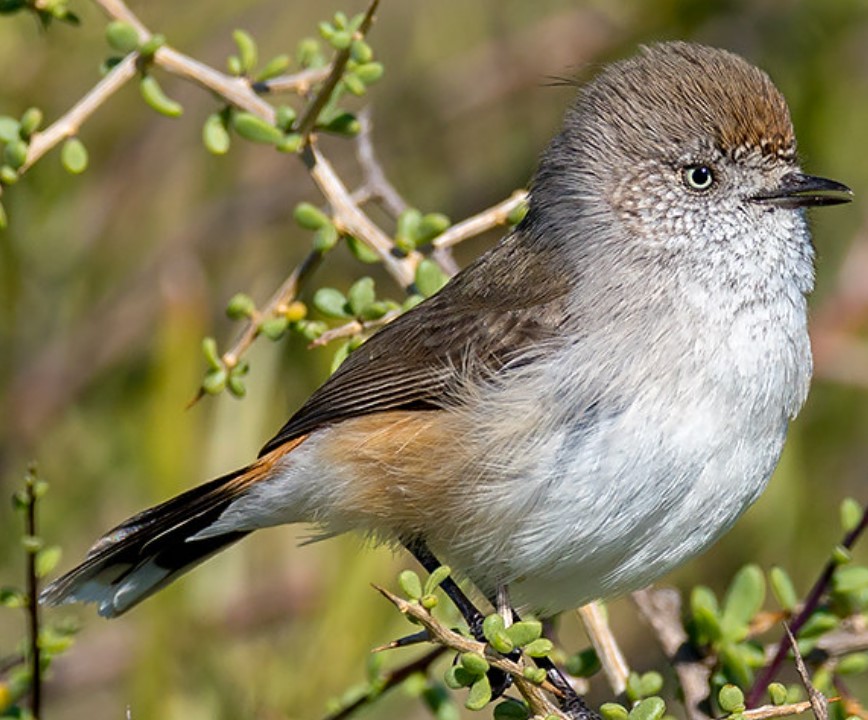Habitat: The desert-dwelling white-browed Treecreeper (Climacteris affinis) is the quietest and least conspicuous of its group. Its core habitats are the dense mulga and belah or blackoke Casuarina woodlands of the arid zone. It also enters mixed woodlands that include other acacias, native pines, Callitris, and occasional eucalypts.
In some instances, when they meet, the larger brown will chase the white-browed aggressively. Browns and Rufous tend to remain in mallee and creek-bed eucalypt groves and feed primarily on the ground in open areas, making extensive competition unlikely. In contrast, the White-browed Treecreeper lives more in the interior of Mulga and Belah, spending less than a quarter of its time on the ground.
Although closely related to the communal Red-browed Treecreeper, the White-browed is rather solitary, like the White-throated. The pairs are sedentary and probably hold large territories year-round, from which the young are dispersed shortly after they are born. Even when paired, male and female forage alone except during breeding; contact is then kept with soft cricket-like chirrups. The treecreepers hop-gallop up tree trunks and main branches, probing in crevices and crannies for food, then flutter-plane off to the next tree’s base.
Early in breeding, males advertise territory by chirruping stridently but sporadically from vantage perches. Only the female incubates, but the male supplies her with food as well as carrying the lining to the nest. Both sexes feed the young, but there are no reports yet of additional attendants helping at the nest. Two broods may be raised in a season.

Identification: MALE: Upper parts earth-brown, greyer, and crown and nape; rump mid-grey (eastern race) or brown (western race). Wings are dusky with a pale buff band across flight feathers. The tail is mid-grey (eastern) to browner (western), with a broad black subterminal band and all but central feathers. Eyebrows are white; ear coverts are streaked black and white; lore is dusky. The throat is dull white; the upper breast is plain mid-grey; the lower breast and belly are boldly striped black and white; and the undertail is buff white with broken black crossbars. The eyes are brown. The bill and feet are dusky black. The female has a rusty red wash over her eyebrows and lores; the upper breast is striped rufous and dull white. The immature (as adults) bird’s eyebrows are grayish and indistinct. Adult plumage is gained at the first annual molt, several months after fledging.
Vocalization: The white-browed treecreeper is usually silent. However, his call is weak, short, descending, cricket-like, sibilant trills or chirrups of two to four notes, which can be tactful between a pair or family party during breeding. Nestlings give a low-pitched, strident trill. The song is a strident chirrup by a male, repeated from a vantage point.
Similar Species: In appearance, it is closely related to the brown treecreeper (Climacteris picumnus).
Diet: In the east and southwest of its range, it overlaps both Brown and Rufous Treecreepers, which also forage in similar ways on the trunks of trees for the same basic food: ants and occasionally other insects.
Nesting and Breeding: Nesting and breeding occur in August–December. Nests are made of grass or strips of bark formed into a cup, at times built up with animal dung, lined with fur, hair, or down. The nest is placed on a deep hollow limb or trunk, sometimes down to ground level.
Eggs: This treecreeper lays 2 or 3 eggs, pale pink, closely spotted, and speckled all over with red-brown and purplish red; oval, about 22 x 17 mm. The incubation period is responsible for females for 17 to 18 days. Young fledge in about 22–23 days. Moreover, an average of 1.58 young fledged per breeding unit annually.
Distribution: The white-browed treecreeper is found in Mulga and Blackoke woodlands of the southern arid zone north to about 24°S. It is one of the smallest of the Australo-Papuan treecreepers and the sole family member adapted to dry environments.
Races: There are two races (C. a. affinis): the western, east-to-northern Simpson Desert, the western Lake Eyre basin, and the Flinders Ranges. (C. a. superciliosus) The other is the eastern, west-to-northern Murray Mallee, and western Darling basins.
Other Name: It is also known as the white-eyebrowed treecreeper.
Size: Its size is about 135–150 mm.
Status: The population is stable; hence, it is the least concerned on the list of IUCN.
Threat: The main threats include habitat loss and fragmentation due to land clearing and the effects of climate change.
Read More: Rufous Treecreeper – The Tiny Charming Bird







